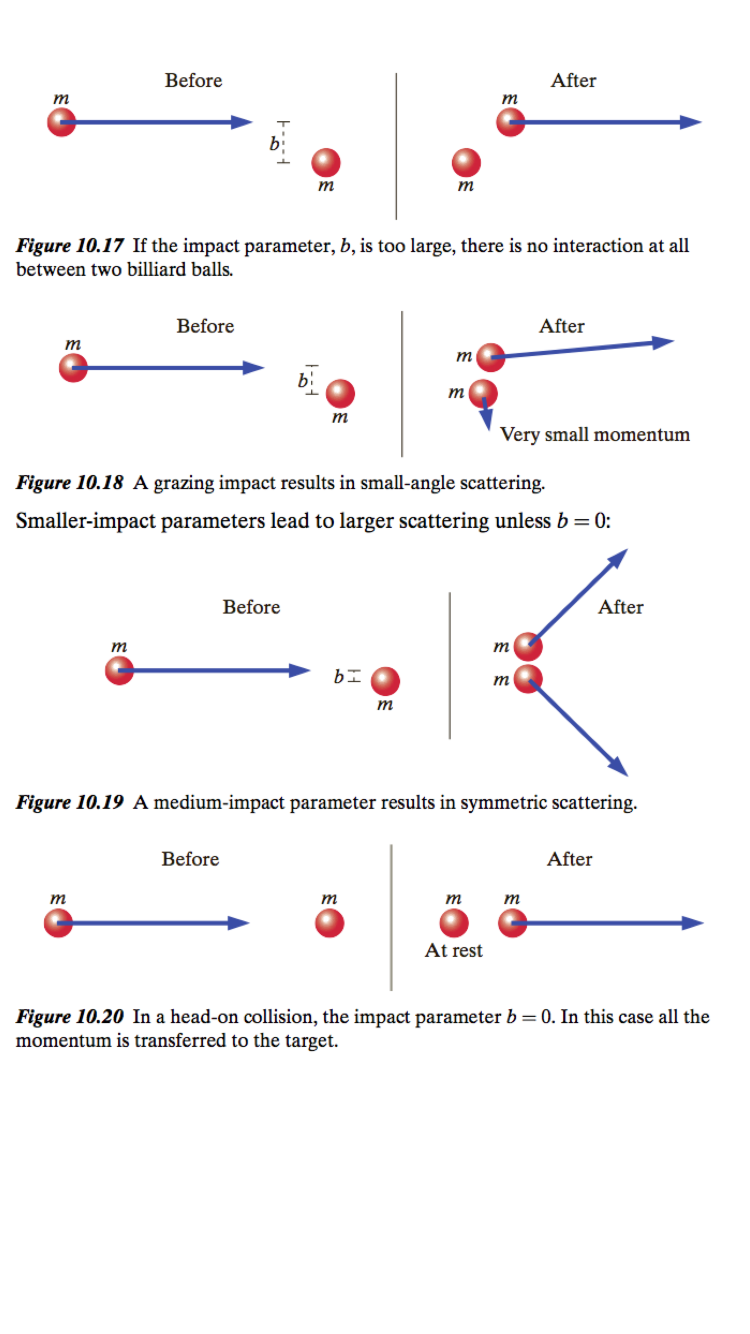Scattering: Collisions in 2D and 3D
Claimed by: Andreas Ward (Fall 2015) and Sam Webster (Spring 2016)
The Main Idea
Unlike normal collisions, atomic and nuclear collisions are far too small to observe the curving trajectories of the interacting particles. The only thing that can be noticed is the initial and final states of the interaction. Scattering experiments are incorporated in the world of collisions to be able to study the minute details (structure) of atoms, nuclei, and other tiny particles as the interact with one another.
Impact Parameters
Definition: The distance between centers perpendicular to the incoming velocity. Impact parameter is often denoted by the variable b.
A head-on collision has an impact parameter of zero and with equal masses fully transfers the momentum such as with Newton's Cradle. As the impact parameter gets smaller the collision has a larger effect, and an even large deflection angle (scattering).
Elastic collisions between two billiard balls (Double Click Image)

Examples
Simple
The collision of an alpha particle (helium nucleus) with the nucleus of a gold atom
Simulation in Python
Coming Soon
History
In 1871 Lord Rayleigh published a paper on scattering. Rayleigh scattering is the dispersion of electromagnetic radiation by particles that have a minute radius less than approximately 1/10 the wavelength. It laid the foundation to research on scattering and information we have today.
See also
[[Category:Collisions] (Main page)
Further reading
Matter and Interactions, Volume I: Modern Mechanics, 4th Edition. (Chapter 10.6)
External links
References
Chabay, Ruth W., Bruce Sherwood. Matter and Interactions, Volume I: Modern Mechanics, 4th Edition. Wiley, 19/2014.